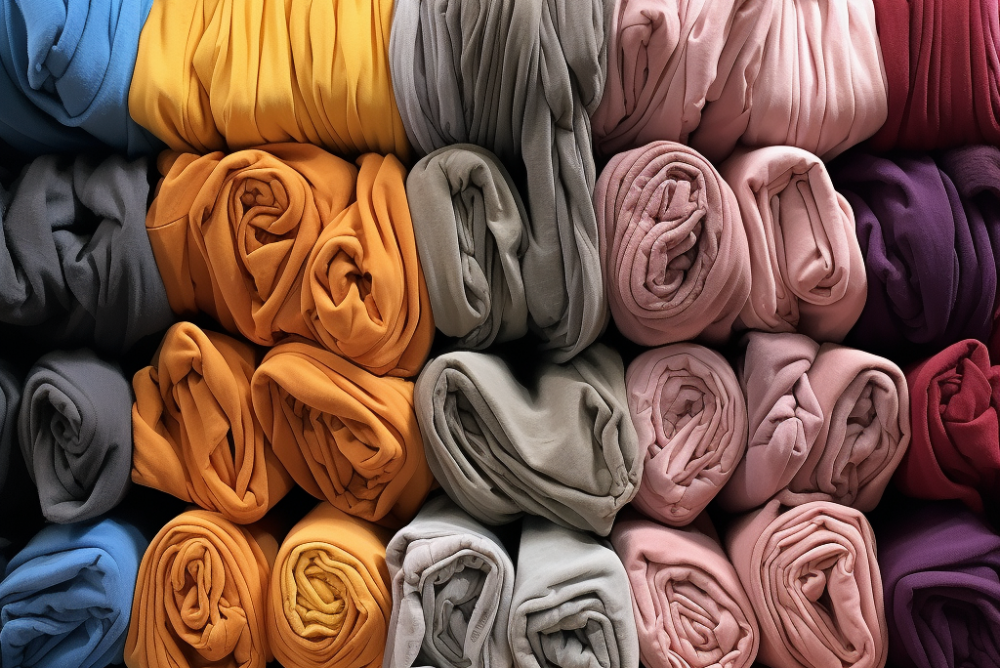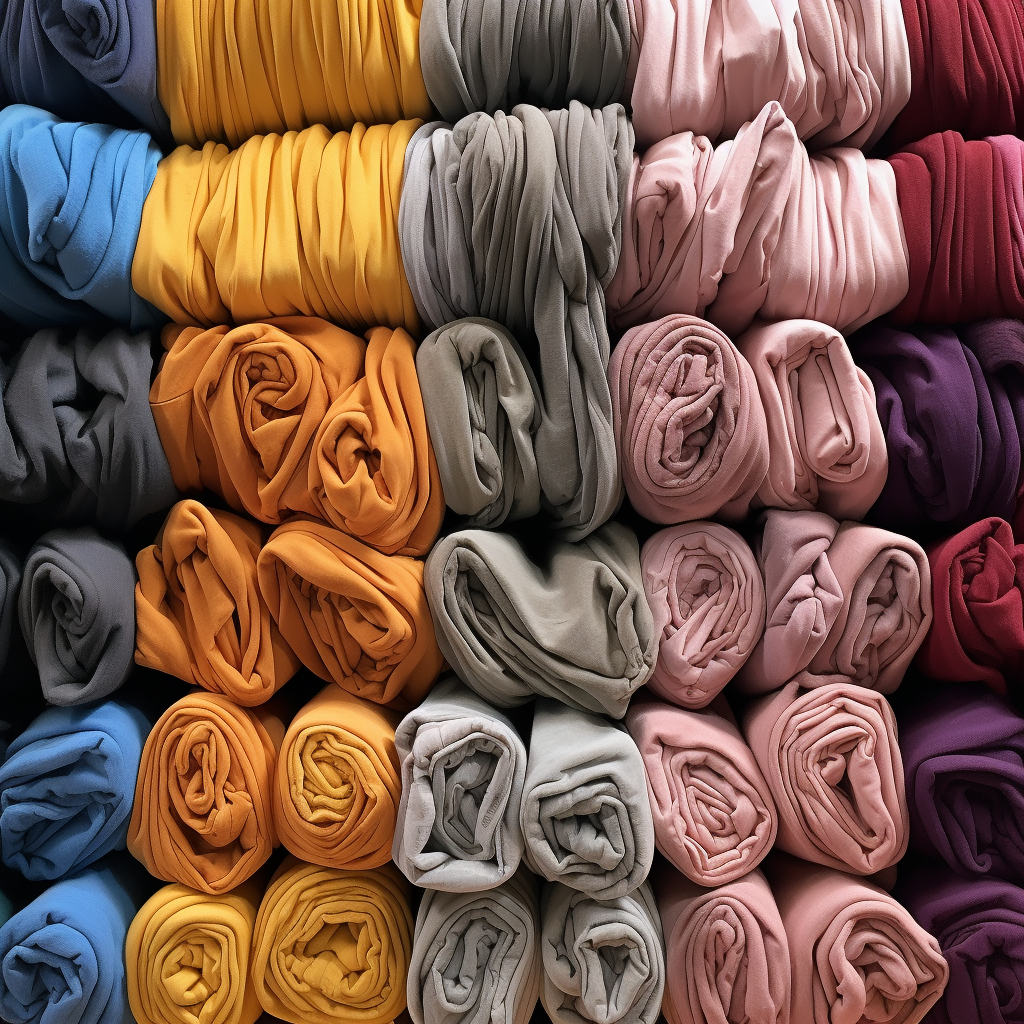Calculating Elastic Consumption for Garments: Formulas and Tips


Elastic is an essential notion in ready-to-wear garment manufacturing. It provides flexibility, comfort, and structure to different parts of a garment such as waistbands, armholes, sleeves, etc. Calculating the right amount of elastic needed for a style is crucial to avoid wastage and ensure proper fit. This process is called elastic consumption.
Understanding how to accurately calculate elastic consumption can help manufacturers develop efficient costing, minimize fabric wastage, and improve productivity. This article will provide a comprehensive guide on how to calculate elastic consumption for any garment style.
What is Elastic Consumption?
Elastic consumption refers to the amount of elastic material required to complete a particular garment component. It is usually expressed as a percentage of the dimension being elasticated.
For example, if a 24-inch waistband requires 6 inches of 1-inch wide elastic, the elastic consumption would be 25% (6 inches of elastic for 24 inches of waistband).
The elastic consumption percentage is useful for estimating total yardage and costs. It provides a rule of thumb for how much elastic to stock and cut for production.
Why Calculate Elastic Consumption?
There are several key reasons manufacturers must accurately calculate elastic consumption:
Avoid fabric waste - Underestimating elastic requirements leads to cutting short elastic pieces. Overestimating wastes unused elastic. Precise calculations minimize wastage.
Consistent sizing - Correct elastic consumption ensures proper stretch and recovery. This provides consistency in fit across sizes.
Costing - The elastic percentage provides a quick formula for costing. Applying the percentage to any garment dimension gives the elastic yardage needed.
Production efficiency - Knowing exactly how much elastic is needed streamlines the cutting process. This improves planning and workflow.
Inventory management - Elastic percentages help anticipate inventory needs. Enough stock can be ordered to maintain optimum production schedules.
Factors that Affect Elastic Consumption
Several factors must be considered when calculating how much elastic a garment needs:
Fabric Type
The base fabric determines the amount of give. Stretch fabrics need less elastic than non-stretch wovens. Knits require the least elastic due to inherent stretchiness.
Garment Style
More shaping and structure demands higher elastic consumption. For example, a dress may need less elastic than trousers with contour waistbands and ankle cuffs.
Elastic Type
Thinner elastics usually require higher consumption than wider elastics. The tension also affects this. Higher tension elastics need less length for equivalent gather.
Elastic Tension
Tighter tension concentrates elastic power in shorter length. The same elastic stretched to lower tension needs more length to equalize tension.
Accounting for these factors results in the optimum elastic consumption calculation.
How to Calculate Elastic Consumption
Follow these steps to calculate elastic requirements for any garment:
Measure Garment Dimensions
Take measurements of the garment section needing elastic. For waistbands, measure the waist. For sleeve cuffs, measure wrist circumference.
Determine Amount of Elastic Needed
Decide on the ideal stretched length of elastic needed. The elastic should fit snugly without over-constricting.
For waistbands, the stretched length is usually 4-6 inches less than waist measurement. For cuffs, 2 inches less than wrist size.
Calculate Elastic Percentage
Divide the stretched elastic length by the body dimension. Multiply by 100 to convert to a percentage.
For example, 24 inch waist needing 6 inches of stretched elastic:
6 inches elastic / 24 inches waist = 25% elastic consumption
Apply Formulas for Elastic Consumption
Use the consumption percentage as a baseline. Then apply style-specific formulas given below for precise yardage.
Following this methodology provides accurate elastic requirements for any garment.

Formulas for Calculating Elastic Consumption
Here are some common formulas for determining elastic needs:
Straight Waistband:
(Waistband length x 2) x Elastic % = Elastic needed
E.g. For 24” waistband at 25%:
(24” x 2) x 25% = 12” elastic
Contour Waistband:
(Waistband length x 2) x Elastic % x 115% = Elastic needed
The extra 15% accounts for shaped contour.
E.g. For 24” contour waistband:
(24” x 2) x 25% x 1.15 = 13.8” elastic
Armscye:
Armscye seam length x Elastic % = Elastic needed
E.g. 20” armscye at 20%
20” x 20% = 4” elastic
Neckline:
Neckline seam length x Elastic % = Elastic needed
Cuffs:
Wrist circumference x Elastic % = Elastic needed
E.g. 8” wrist at 25%
8” x 25% = 2” elastic
Bottom Opening:
Opening circumference x Elastic % = Elastic needed
These formulas can be applied to any garment measurement to calculate elastic requirements.
Tips for Accurate Elastic Consumption
To get the most precise elastic consumption, also consider:
Ease - Add a bit of extra length for comfort and wiggle room.
Overlap - Account for the overlap when ends are joined. Usually 0.5 - 1 inch.
Check measurements - Measure the garment sample to confirm calculations.
Testing elastic consumption on prototypes and making adjustments ensures exact percentages for production.
Conclusion
Determining the optimum elastic consumption takes practice and experience. An accurate calculation considers fabric type, garment style, elastic properties, and production methods.
Following the steps outlined and applying the formulas provides a straightforward way to estimate elastic needs. Fine tuning based on prototypes perfects the percentages.
With some care and experience, elastic consumption can be predicted reliably. The payoff is in minimized waste, consistent sizing, and smooth production flow. Taking the time to calculate elastic needs is an investment that leads to increased quality and efficiency.
FAQs
What if I don't have formulas specific to my garment style?
The formulas provided serve as a general guideline. If you don't have an exact formula, you can use the straight waistband calculation as a starting point. Test different elastic percentages on a prototype to determine the optimum consumption rate.
What happens if I calculate the elastic consumption incorrectly?
Using inaccurate elastic consumption rates can lead to the following issues:
- Ill-fitting garments if too little or too much elastic is used
- Wasted time and fabric if elastic pieces have to be re-cut
- Inconsistent sizing across styles if consumption rates vary
- Customer dissatisfaction and quality problems due to poor fit
How do I calculate elastic consumption on children's or plus-size garments?
The same methodology applies. Take measurements of the specific size range, determine the ideal stretched elastic length, and calculate the percentage consumption. The formulas can be applied across all sizes. Allow slightly higher consumption rates for growing room in children's garments.
Should I use the relaxed or stretched measurement of elastic?
Always base calculations on the desired stretched length of the elastic in the finished garment. This will account for the contraction and provide the right amount of stretch and recovery.
How often should I re-check elastic consumption rates?
It's good practice to periodically review and update consumption rates as fabrics, elastics, and designs change. As a rule of thumb, formal calculations should be redone each season for new styles.





-500x500.jpg)
-500x500.jpg)
-500x500.jpg)
-500x500.jpg)
-500x500.jpg)